 Albairate, Gaggiano, Vermezzo and Rosate, leader of the District, are four Municipalities that are located in the West wing of Milan and are small towns whose habitability is closely linked to the specific historical and environmental quality. The distinctive character of the District, which reaches nearly 23,000 inhabitants , is related to agricultural and rural tradition: the Big Naviglio in the first place, but also large wooded areas and those devoted to cultivation.
Albairate, Gaggiano, Vermezzo and Rosate, leader of the District, are four Municipalities that are located in the West wing of Milan and are small towns whose habitability is closely linked to the specific historical and environmental quality. The distinctive character of the District, which reaches nearly 23,000 inhabitants , is related to agricultural and rural tradition: the Big Naviglio in the first place, but also large wooded areas and those devoted to cultivation.
These elements are the basis of historical municipal centers as well as the twinge network of villages. The District has a strong presence of numerous prestigious architectural works and a full calendar of recreational events that have already seen a fruitful collaboration between the cultural and commercial component , a sector highly developed. The exploitation of the trading system of the territory is to act with an integrated approach, palying on three key elements: culture and tradition, nature and environment, services and infrastructures. All in a unified network that is beneficial, resource and opportunity, for the citizens of the area, for the prospective residents and for the tourists attracted by the territorial peculiarities .
Rosate Municipality
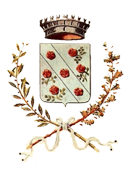 Rosate is a Municipality of 5.246 inhabitants whose territory reaches the countryside of South Milan Agricultural Park not far from the borders of the Ticino Park. Crossed by many small canals and irrigation ditches, the countryside of Rosate is historically the richest in paddy fields and Abbiategrasso irrigated meadows . As evidence of this, many farms bring in colours to the fields. Besides the different farms, at least until the 50s , dozens of mills existed but they are today in disuse or their traces are competely lost. It remains, however, the Umiliate Mill, the only alive testimony of these works of hydraulic engineering. Today Rosate is still an important agricultural center, that continues to enhance and to preserve its traditions.
Rosate is a Municipality of 5.246 inhabitants whose territory reaches the countryside of South Milan Agricultural Park not far from the borders of the Ticino Park. Crossed by many small canals and irrigation ditches, the countryside of Rosate is historically the richest in paddy fields and Abbiategrasso irrigated meadows . As evidence of this, many farms bring in colours to the fields. Besides the different farms, at least until the 50s , dozens of mills existed but they are today in disuse or their traces are competely lost. It remains, however, the Umiliate Mill, the only alive testimony of these works of hydraulic engineering. Today Rosate is still an important agricultural center, that continues to enhance and to preserve its traditions.
In the past, during the Late Middle Ages, however, it was an important village, being one of the historical capitals of the County of Burgaria, one of the counties which divided the March of Lombardy, during the domination of the Lombards, the Franks, and in part under the Holy Roman German Empire .
Walking through the streets of the center among medieval views, baroque remains and old tenements, courtyards charming theaters and ancestral alleys, embellished today by craft shops.
- Vittorio Veneto Street 2 – 20088, Rosate, MI, Italy
- Telephone: + 39 02 908301
- Fax: + 39 02 90848046
- E-mail: This email address is being protected from spambots. You need JavaScript enabled to view it.
- PEC: This email address is being protected from spambots. You need JavaScript enabled to view it.
Albairate Municipality
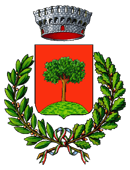 A typical rural village, with streets lined by buildings in the courtyard and a central square of elongated shape. This is the urban structure of Albairate, just over 4,000 inhabitants.
A typical rural village, with streets lined by buildings in the courtyard and a central square of elongated shape. This is the urban structure of Albairate, just over 4,000 inhabitants.
A center that, even today, is aimed at agricultural tradition, in the center of a well-known local museum that tells its story through the precious historical remains preserved until today.
The relative proximity of Milan has madesure that Albairate would be part of the many historical vicissitudes of the big city, interspersed with few moments of serenity, especially of religious nature: there is evidence of the pastoral visits of the Archbishop Gabriel Sforza, of St. Charles Borromeo, of the Cardinal Federigo Borromeo and of the Cardinal Pozzobonelli.
Two major events in the history of the town are the rebuilding of the St George church, that started in 1938, and the radical change in the structure of the country with the decentralization of the stables and the development of urban construction, predominantly of single family, of the 60s.
- Cesare Battisti Street 2 - 20080, Albairate, MI, Italy
- Telefono: + 39 02 9498131
- Fax: + 39 02 94981324
- E-mail: This email address is being protected from spambots. You need JavaScript enabled to view it.
Bubbiano Municipality
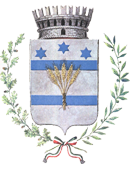 On the left shore of Ticino, between the Pavese Naviglio and to Bereguardo Naviglio, there is the territory of Bubbiano. The town appears for the first time on documents since 1160 when it refers to an exchange of lands belonging to the Abbey of Morimondo. Since then Bubbiano constituted an autonomous farming community, able to self-govern with their own consuls.
On the left shore of Ticino, between the Pavese Naviglio and to Bereguardo Naviglio, there is the territory of Bubbiano. The town appears for the first time on documents since 1160 when it refers to an exchange of lands belonging to the Abbey of Morimondo. Since then Bubbiano constituted an autonomous farming community, able to self-govern with their own consuls.
The parish church, dedicated to St. Ambrose, shows more signs of the imposed numerous renovations over the centuries in order to respond to the need to new situations and needs. In The coat-of-arms coexist two different elements: one descriptive of the land, of the rivers and the Ticinello Naviglio of Bereguardo, and one of an economic nature which emphasizes the predominance of its agricultural land.
-
Vittorio Veneto Square 16 - 20080, Bubbiano, MI, Italy
-
Telephone: + 39 02 90848838
-
Fax: + 39 02 90849018
-
E-mail: This email address is being protected from spambots. You need JavaScript enabled to view it.
-
PEC: This email address is being protected from spambots. You need JavaScript enabled to view it.
Calvignasco Municipality
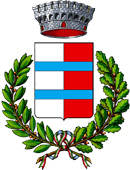 On the borders of the Pavia Province, between Rosate and Casorate Primo, there is the town of Calvignasco. In the province of Milan, bathed by the waters of Ticinello, with its 1,029 inhabitants, the municipality has a history linked to Binasco. The name Calvignasco (Calvignàsc in Milanese dialect) seems to derive from the Latin word Calvinius. In antiquity, the municipality was part of the manor of Moncucco owned by the Visconti family of Fontaneto. The current coat-of-arms is composed by the most classic among the heraldic figures: the party and the band.
On the borders of the Pavia Province, between Rosate and Casorate Primo, there is the town of Calvignasco. In the province of Milan, bathed by the waters of Ticinello, with its 1,029 inhabitants, the municipality has a history linked to Binasco. The name Calvignasco (Calvignàsc in Milanese dialect) seems to derive from the Latin word Calvinius. In antiquity, the municipality was part of the manor of Moncucco owned by the Visconti family of Fontaneto. The current coat-of-arms is composed by the most classic among the heraldic figures: the party and the band.
The most valuable historic building is undoubtedly the parish of St. Michael dedicated to the Archangel since the fourteenth century. Its current structure depends on the reconstruction started in 1605, at a time when Cardinal Federico Borromeo had visited the church, finding it too small.
- Fiume Street 5 – 20080, Calvignasco, MI, Italy
- Telephone: + 39 02 90849054 or + 39 02 90848862
- Fax: + 39 02 90870241
- PEC: This email address is being protected from spambots. You need JavaScript enabled to view it.
Vermezzo con Zelo Municipality
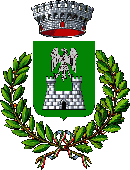 The City of Vermezzo crossed by the Big Canal, counts nearly 4,000 inhabitants. The name has an origin somewhat debated, but Latin, so it is believed that the first settlement took place in Roman times. The name may in fact derive from viridis medium, namely in the middle of the green, then changed in Vermez. This hypothesis is supported by the fact that in the district, where there is the Farm of the Count, apparently there was once a verderium or viridarium , an orchard that was known for the variety of cultivated plants.
The City of Vermezzo crossed by the Big Canal, counts nearly 4,000 inhabitants. The name has an origin somewhat debated, but Latin, so it is believed that the first settlement took place in Roman times. The name may in fact derive from viridis medium, namely in the middle of the green, then changed in Vermez. This hypothesis is supported by the fact that in the district, where there is the Farm of the Count, apparently there was once a verderium or viridarium , an orchard that was known for the variety of cultivated plants.
The baroque church of St. Zeno, the Pozzobonelli Panigarola Palace and the Big Farm are three buildings of remarkable urban prestige.
The Pozzobonelli Panigarola Palace, according with some views attributed to Bramante, it is definitely worth noting. It is located in the Trees Municipality Square and it presents a typical “U” pattern with two wings advancing from the main building built on what was once the local castle, belonged to the Pozzobonelli’s Family . At the end of 400, it was bought by Gustavo Panigarola collaborator of Ludovico il Moro, who had to renew the building with frescoes of Leonardo da Vinci and Bramante’s taste. It returned in 700 to the original family, the palace was chosen as the summer residence of Cardinal Joseph Pozzobonelli , Archbishop of Milan.
The charming town now has a distinctly residential soul, with beautiful villas, gardens and street furniture of superior style.
![]() (Ex) Comune di Vermezzo
(Ex) Comune di Vermezzo
- Comunale Square 4 - 20071, Vermezzo con Zelo, MI, Italy
- Telephone: + 39 02 9440301
- Fax: + 39 029449281
- PEC: This email address is being protected from spambots. You need JavaScript enabled to view it.
- Roma Square 1 - 20071, Vermezzo con Zelo, MI, Italy
- Telephone: + 39 02 9440324
- PEC: This email address is being protected from spambots. You need JavaScript enabled to view it.
Cusago Municipality
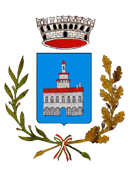 Town of nearly 3000 inhabitants, although in recent years increased residential and industrial settlements, it is the only one to have preserved, among the countries of the near Milan hinterland shocked by a wild urban expansion, its identity enhancing some aspects of the landscape. In particular, the town is built along an old road, coming from Milan, near Vercellina Door, passing in Baggio and continuing in the direction of Cisliano, Albairate and Abbiategrasso.
Town of nearly 3000 inhabitants, although in recent years increased residential and industrial settlements, it is the only one to have preserved, among the countries of the near Milan hinterland shocked by a wild urban expansion, its identity enhancing some aspects of the landscape. In particular, the town is built along an old road, coming from Milan, near Vercellina Door, passing in Baggio and continuing in the direction of Cisliano, Albairate and Abbiategrasso.
The history of Cusago is identified with that of its castle built around 1350 by Bernabo Visconti as a countryside residence. In fact, at that time, this area stretched vast forests that were used as hunting grounds by the Lords of Milan. With Filippo Maria Visconti Cusago was connected to the Big Naviglio, near Gaggiano by a canal, now disappeared. In the history of the Castle is also linked a curiosity, the one of the secret tunnel. The underground tunnel, whose entrance is located inside the castle, would link the castle (in the direction of Milan) to the church of St Red Mary and hence would continue to Baggio and then to Milan (some accesses in Baggio are well known) and on the other side, to the Pavia direction, it intersects another network of tunnels that runs tills the Certosa di Pavia, with a length of several km. The tunnel, would have a width of about 4/5 meters , a height of around 2.5 meters and it would have been constructed with a brick acrhway. A structure such as to allow the passage of horse-drawn carriages , so with a probable function of escape of the lords of Milan.
Two religious buildings complement the picturesque landscape of the city, the church of St. Red Mary and the parish church of Saints Fermo and Rustico.
- Soncino Square 2 - 20090, Cusago, MI, Italy
- Telephone: + 39 02 901661
- Fax: + 39 02 90119890
- E-mail: This email address is being protected from spambots. You need JavaScript enabled to view it.
- PEC: This email address is being protected from spambots. You need JavaScript enabled to view it.
Gaggiano Municipality
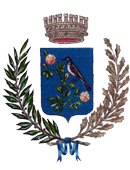 With its 8,000 citizens, the Municipality of Gaggiano, in the context of the Big Naviglio and the South Milan Agricultural Park, is the first town along the old Vigevano road. not suffering from the congestion and from the crowding of the countries of the hinterland of Milan.
With its 8,000 citizens, the Municipality of Gaggiano, in the context of the Big Naviglio and the South Milan Agricultural Park, is the first town along the old Vigevano road. not suffering from the congestion and from the crowding of the countries of the hinterland of Milan.
The origin of the name is curious, it was called "Gaggiano" because there were many magpies (in antiquity called gazzano). Regarding its story, however, it is good to remember how the country has incorporated, over the centuries, numerous greatly expanding farms, that had given rise to real villages with their parish.
To visit along the waterway, especially in the area where the church of St. Invenzio overlooking the canal. Some historic buildings complete this picturesque scenery, in particular: Venini Uboldi Palace, Marine Villa, Adda Borromeo Villa and Donato of the Count Farm.
The village is easily reached from Milan starting from Lorenteggio Street, or from Porta Genova direction Corsico, always along the Big Naviglio
-
Roma Street 36 - 20083, Gaggiano, MI, Italy
-
Telephone: + 39 02 9089921
-
Fax: + 39 02 9081666
-
E-mail: This email address is being protected from spambots. You need JavaScript enabled to view it.
- PEC: This email address is being protected from spambots. You need JavaScript enabled to view it.
 English (UK)
English (UK)  Italiano (Italia)
Italiano (Italia) 